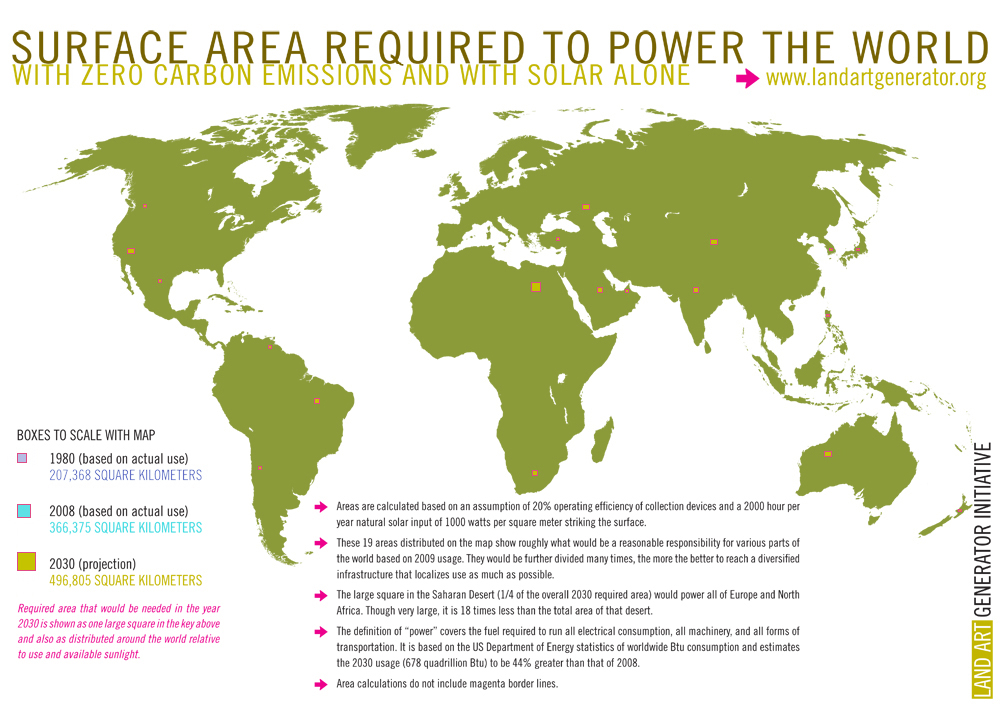
The folks at Land Generator used 678 quadrillion BTUs, the predicted global energy consumption in 2030, as the basis for their calculations. They converted this figure to 198,721,800,000,000 kilowatt-hours and then divided it by 400 kilowatt-hours of solar energy production per square meter of land to calculate the square footage of solar panels necessary to supply the earth with power. This 400 kilowatt-hours value was calculated based on the assumption of 20 percent solar panel efficiency, 70 percent sunshine days each year, and the measurement that 1,000 watts of solar energy hits each square meter of land on the Earth.
According to Land Art’s calculations, we would need 496,805 square kilometers or 191,817 square miles of solar panels to provide renewable power for the entire Earth. This solar panel requirement is roughly equivalent to the land mass of Spain. When looking at it globally, it is a small amount of land for a lot of energy.
Of course, this is an estimate that could change. This calculation is based current technology that is 20 percent efficient at harvesting the energy from sunlight and further assumes solar energy would be sole energy provider. If this efficiency were improved or other renewable energies were used to supply power, the amount of land mass required would shrink even further. We also wouldn’t have to take over an entire country — these panels could be spread out on the rooftops of houses and buildings around the world.
According to the US Department of Energy, the sun bombards the earth with 430 quintillion joules of energy each hour of the day. This single hour of sunlight would supply the earth with all the energy it needs for an entire year. With such an abundant energy source and so little land mass required for harvesting it, it would be shocking if we didn’t fully utilize this resource in the upcoming decades.




